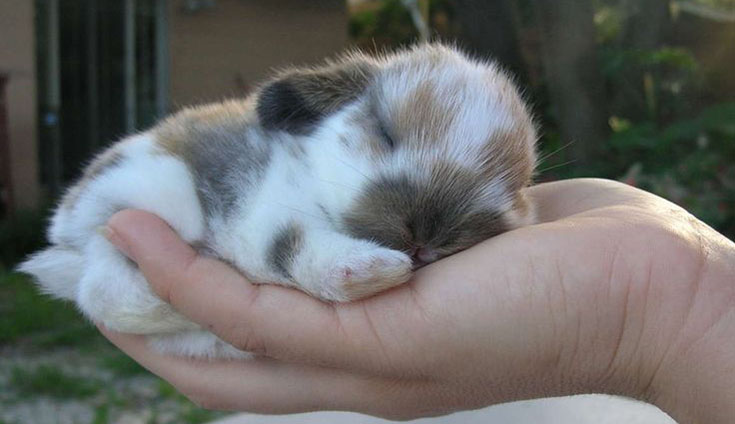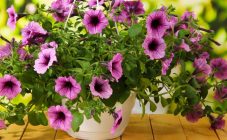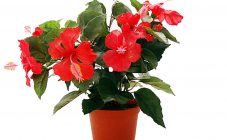Content:
More and more often in families you can find unusual pets, for example, a decorative rabbit. The decision to have a baby bunny should be balanced and deliberate, caring for him is not so simple and has many features. Beforehand, you should definitely find out how to choose and care for a decorative rabbit, otherwise you can regret buying.
How to choose a breed of decorative rabbit
Keeping a rabbit in an apartment is possible when it comes to decorative breeds. It is recommended to give preference to short-haired breeds, otherwise you will have to spend a lot of time caring for the animal. Today, the breed of a lop-eared ram is in demand, which is the owner of attractive long and drooping ears.
Castration and sterilization at an early age can prevent many difficulties in the future.
The most common breeds of decorative rabbits:
- Rabbit Rex with a pleasant to the touch and attractive plush hair.
- Short-haired, colored dwarfs with small ears and a glossy coat.
- Lop-eared ram, which is famous for its drooping ears and submissive, calm nature.
- Angora rabbits are attractive, but the length of their wool can reach 20 cm. If potential owners are ready to regularly groom their wool, then this is an excellent option.
What you need to buy a decorative rabbit
To keep a decorative rabbit, it is necessary to create the most comfortable living conditions for it. You should purchase a cage and all the necessary equipment. You need to be guided by the following recommendations:
- The purchased cage should be spacious - at least 4 times larger than the size of a small rabbit. It should have enough room for drinkers, feeders, a tray and a house where the rabbit can spend his leisure time if desired.
- It is recommended to use a plastic tray for the cage. It is worth refraining from purchasing a lattice bottom: rabbit feet are not adapted to them.
- The bottom should not be slippery, do not sprinkle straw or sawdust on its entire surface, otherwise the pet will shit all over the cage.
- It is recommended to put straw, paper or shavings of deciduous trees in the tray.
- An autodrinker and a hay nursery are attached to the cage bars. This heavy ceramic hopper is ideal for grain feed.
The cage should be kept out of reach of other pets and the small child. You should also not put it near a TV, heating appliances and frequently opening interior doors. The place should be well ventilated, protected from direct sunlight and drafts. The optimum temperature for decorative rabbits is + 18-20 degrees.
Other required inventory:
- A bowl-shaped feeder is a necessary utensil for feeding a decorative rabbit. Such bowls are made of metal, plastic and ceramics. It is recommended to use metal or ceramic, they are heavy enough so that the rabbit does not overturn the container with the food. You can use special holders that are attached to the metal grid of the cage.
- By their nature, rabbits are hunters, therefore, in addition to a bowl, it is recommended to purchase various toy feeders that force the animal to make efforts to saturate itself. The most popular: a toy with delicacies, a ball-basket.
- Rabbits should always have access to clean water, especially when fed with concentrated feed and in hot weather. It is recommended to give preference to automatic drinkers with attachment and bottle. The optimal volume of the drinker is 600 ml, this is the daily rate of water consumption by animals. If several decorative rabbits live in the cage, then it is preferable to use 2-4 small drinking bowls, rather than one large one.
- A hay feeder is an indispensable tool for keeping a pet, since fresh hay should always be in the diet for rabbits to function normally. The pet should eat one hay menu every day. The feeder should be chosen so that its volume is approximately equal to the daily requirement, no more.
Decorative rabbit: care and maintenance at home
Rabbits are very shy animals, so it is recommended to protect them from contact with noisy cats, dogs, parrots and people. If the rabbit at home is very scared, her heart may simply stop. It is also worth refraining from acquiring a decorative rabbit for families where a very small child is growing up. If the decorative rabbit is constantly grabbed, pulled by the wool and ears, it will wither and soon die.
As for cleaning their own fur coats, the rabbits do it on their own. Animals can only be washed in exceptional cases, for example, when they have an upset stomach. A wet rabbit must be protected from drafts until the thick wool dries out. In rabbits, thermoregulation is carried out through the ears, so at high temperatures outside, it is enough to moisten them with cool water.
Tips and tricks for caring for a decorative rabbit:
- Novice rabbit breeders should know that it is necessary to let pets out of the cage for a walk every day. It is important to keep track of them.
- During walks, you can take a rabbit in your arms and gently stroke it on the back and head, talk to it. Do not iron under the chin.
- During the day, around 16-17 hours, the rabbit may not appear, this time he spends in his house.
- You need to feed your pet exclusively with fresh and varied food, and the water in the drinking bowl should always be clean.
- It is necessary to vaccinate the pet in a timely manner and, if necessary, show the veterinarian.
- If necessary, rabbits have their nails trimmed using a nail clipper or ordinary nail scissors. The manipulation must be done carefully, avoiding bleeding.
- It is not necessary to cut your pets. Grooming can be very stressful for a shy bunny. It is necessary to comb it out daily.
- You cannot shout at animals if they are guilty, it is enough to say strictly “you cannot”.
Nutrition
The daily diet should include hay, clean water, special mineral stones, compound feed and twigs. The compound feed contains all the necessary nutrients. If you choose between special feed and compound feed, it is better to give preference to the latter option. But for the pets to fully develop, it is not enough to give them one compound feed.
The decorative rabbit always first of all tastes delicious grains, and then, after some time, it will get to the granules. You should not remove the granules, their presence in the diet is very important: they regulate the digestion of animals and have a beneficial effect on the condition of the teeth. Every day rabbits are given 1 tbsp. l. compound feed 3 times a day. There should always be an optimal amount of hay in the cage. Thanks to hay, teeth are grinded and good feces are formed. Occasionally, you can pamper your pet with a white crouton.
Twigs of aspen, pear, poplar, birch, oak, apple and willow are also used to grind teeth. In summer, you can give a small number of twigs with leaves, and in winter, coniferous legs are the best option. Beforehand, they must be thoroughly washed and dried, it is better to collect them in ecologically clean places, away from roadways and industrial enterprises.
Minerals and vitamins provide the rabbit's body with a vitamin or salt stone, crayon. As a supplement to the main diet, it is recommended to add chilled boiled water, which must be changed daily.
Ornamental rabbits can be given chamomile, mouse peas and yarrow. You should refrain from consuming large amounts of alfalfa. The herbs give the pet one leaf at a time. From four months, vegetables and fruits begin to give the rabbit, they should be cut into small pieces.
If the pet begins to be bothered by colic or an upset stomach, grass should be immediately excluded from the diet.
The main part of the food is hay, compound feed and water. For a change, vegetables, fruits and herbs are introduced. In summer, fresh grass cannot be completely replaced with hay.
Diseases: Treatment and Prevention
Decorative rabbits are prone to a large number of ailments. A common problem is disturbances in the functioning of the digestive system, animals often suffer from constipation, as well as infectious diseases.
To avoid the appearance of helminths, the animal must be worm driven every 3-4 years. Treat your pet for parasites 10 days before vaccination. Thanks to vaccination, it is possible to prevent the development of serious infectious diseases. It is also recommended to vaccinate decorative rabbits against rabies, paraphytosis and listeriosis.
Rabbits are first vaccinated against HBV at 6 weeks of age. If there is a likelihood of an epidemic, the vaccine can be given at four weeks of age. Then, at intervals of every six months, the vaccination is repeated.
Vaccination against myxomatosis is carried out from spring to autumn, due to the fact that fleas, flies and other blood-sucking insects are carriers. There is no need to vaccinate your pet in winter. An interval of at least two weeks should be maintained between individual vaccines.
Bunnies are adorable and fluffy creatures that, despite their attractiveness, can be a lot of hassle for their owner. You must first familiarize yourself with all the rules and features of their content. If a person is busy and deprived of the opportunity to devote a lot of time to his pet, decorative rabbits will not be the best option.

















